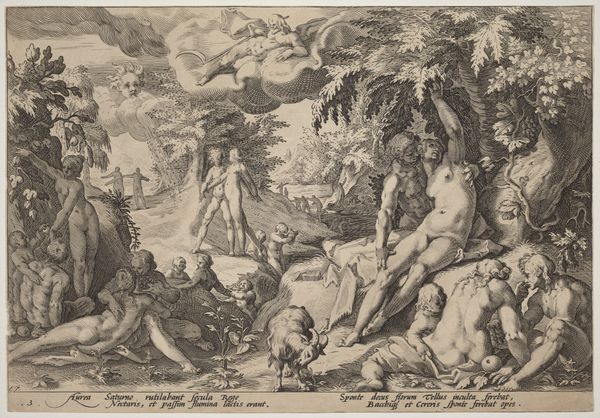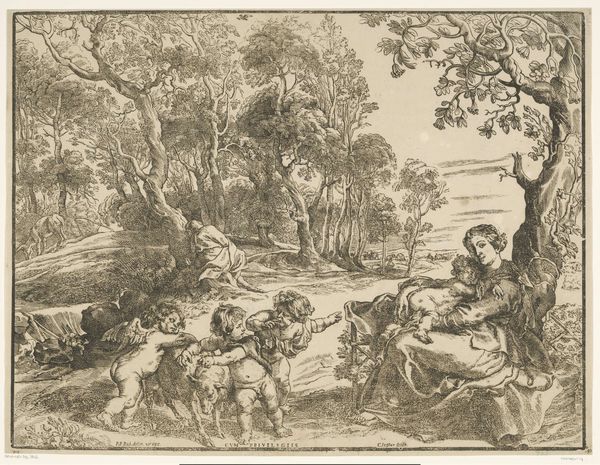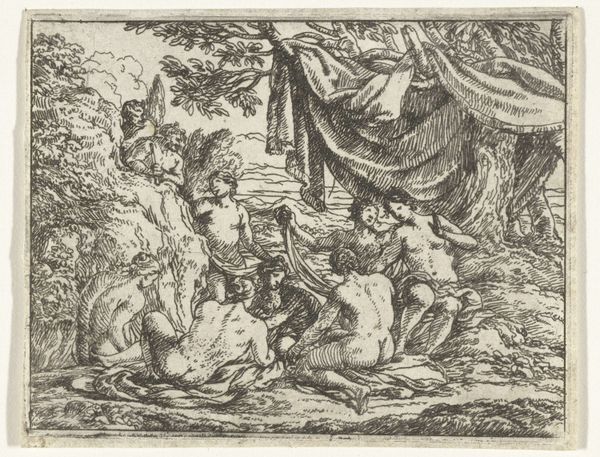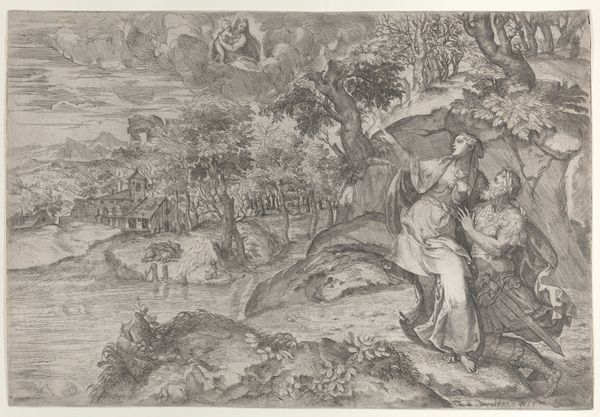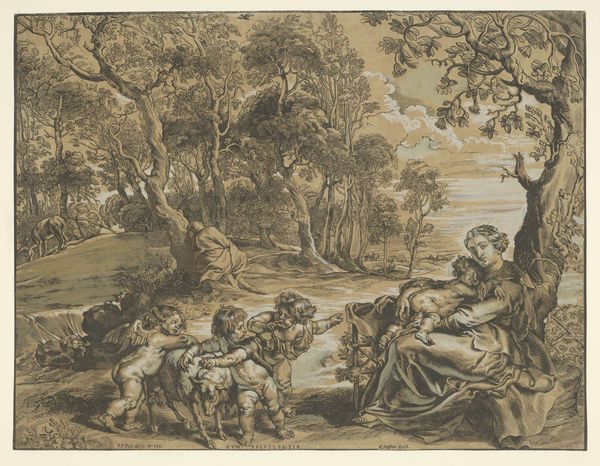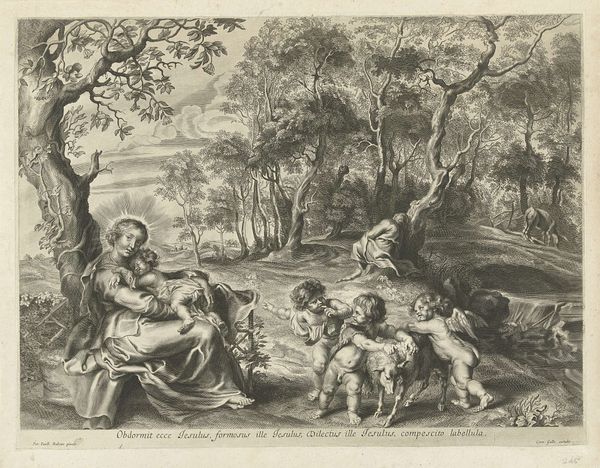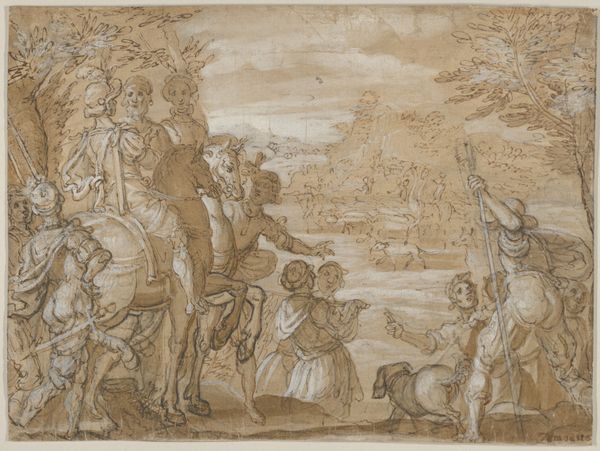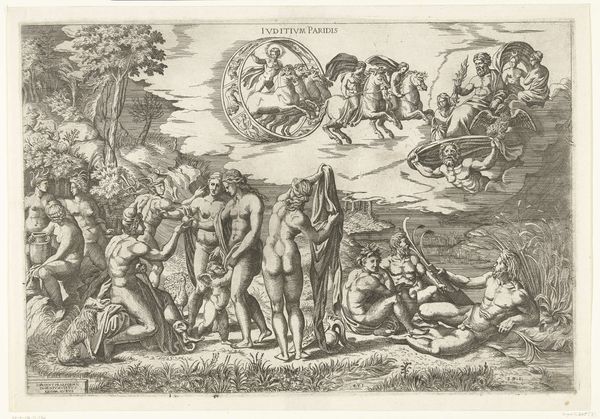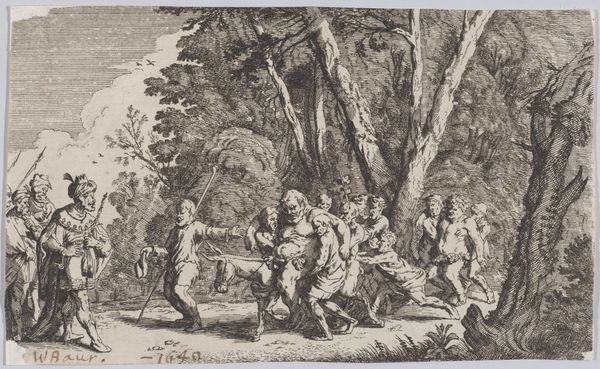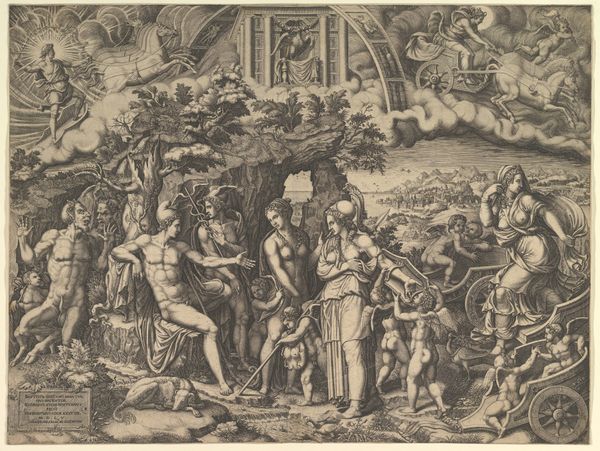
Mercury at the right telling the story of Pan and Syrinx 1531 - 1576
0:00
0:00
drawing, print, ink, engraving
#
drawing
#
ink drawing
# print
#
landscape
#
figuration
#
ink
#
ancient-mediterranean
#
men
#
pen work
#
history-painting
#
engraving
Dimensions: sheet: 8 11/16 x 12 5/8 in. (22 x 32.1 cm)
Copyright: Public Domain
Giulio Bonasone created this print, "Mercury at the right telling the story of Pan and Syrinx," around the mid-16th century. The composition is immediately striking, isn't it? The figures are arranged almost like a stage set, with Mercury positioned to the right, gesturing towards the story unfolding on the left. Look at how Bonasone uses line to define form and create depth. The landscape in the background, with its architectural ruins, provides a backdrop that recedes into the distance, drawing our eye deeper into the scene. The figures themselves are rendered with a network of lines that model their bodies and drapery, giving them volume and weight. But what does this tell us? It seems Bonasone is not just illustrating a story but is also interested in the act of storytelling itself. Mercury, as the messenger of the gods, becomes a kind of artist figure, mediating between the viewer and the myth. Notice the contrast between the active scene of Pan and Syrinx and the more static group listening to Mercury. This contrast underscores the power of narrative, its ability to transport and transform. It highlights art's capacity to constantly negotiate and redefine meaning across time.
Comments
No comments
Be the first to comment and join the conversation on the ultimate creative platform.
